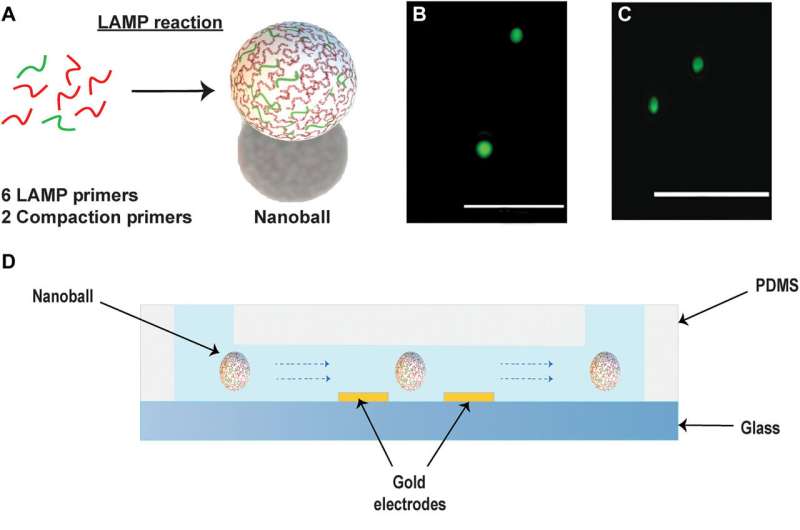September 7, 2023 report
This article has been reviewed according to Science X's editorial process and policies. Editors have highlighted the following attributes while ensuring the content's credibility:
fact-checked
peer-reviewed publication
trusted source
proofread
A simple, low-cost LAMP-based device that can detect low concentrations of pathogens in patient samples

A team of microbiologists from Rutgers, The State University of New Jersey, the Karolinska Institutet, Yale University and Stanford University has developed a simple, low-cost LAMP-based device that can be used to detect low concentrations of pathogens in patient samples. The group describes the factors that went into developing the device in the journal Science Advances.
One of the lessons learned from the global pandemic was that there is a need for a low-cost, easy-to-use device that can detect a COVID-19 infection before the onset of symptoms. Isolating such people would prevent the spread of the disease. In this new effort, the research team claims they have developed just such a device.
To create their device, the researchers started with the idea that it would have to recognize viral DNA rather than circulating antigens. That would allow for the discovery of an infection even before the immune system got heavily involved. And that led them to begin with loop-mediated isothermal amplification (LAMP) technology to create a point-of-care (POC) device.
It works by concentrating DNA from a pathogen and then bunching it into balls. The balls, the team found, could then be tested using an electrical signaling device, which would identify the unique pathogen. And the number of balls in a sample would provide the degree of concentration of the pathogen.
Testing of the device using saliva samples showed that it was capable of detecting low concentrations of SARS-CoV-2, HIV and the tuberculosis bacteria. They also found that it could be mass produced inexpensively and that it could be made small enough for sale at virtually any site and used by untrained people. It also returned results in less than an hour.
The device could also be used to detect bacterial enzymes associated with pathogens that are becoming resistant to antibiotics. The researchers plan to continue their research with the goal of trademarking their device and then taking it to market as soon as possible.
More information: Muhammad Tayyab et al, Digital assay for rapid electronic quantification of clinical pathogens using DNA nanoballs, Science Advances (2023). DOI: 10.1126/sciadv.adi4997
© 2023 Science X Network



















